Yogasophy
Welcome to my tranquil oasis, where serenity meets strength.
Dive into the transformative world of yoga, on a journey to discover balance, peace, and well-being through mindful movement and breath.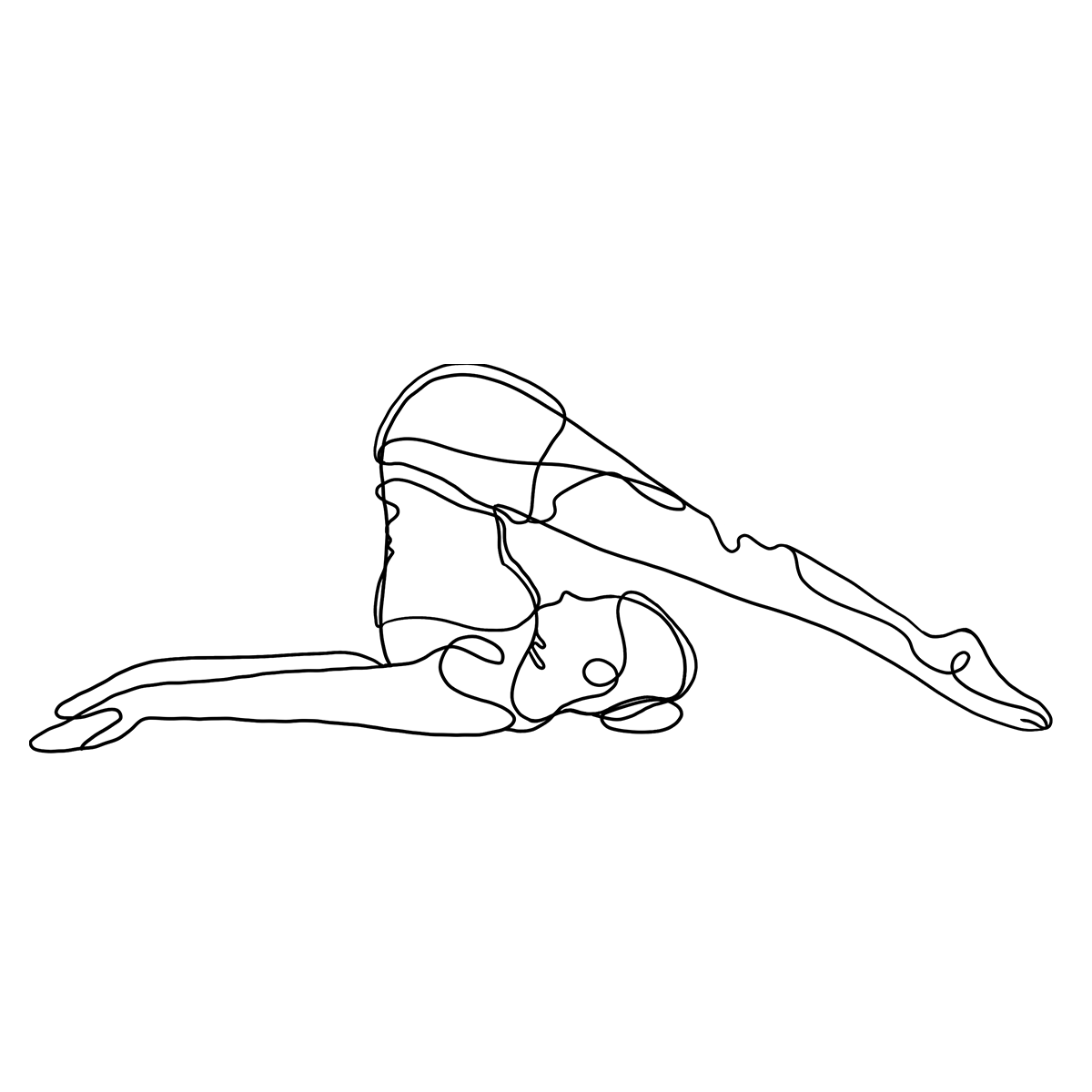
Welcome to my tranquil oasis, where serenity meets strength.
Dive into the transformative world of yoga, on a journey to discover balance, peace, and well-being through mindful movement and breath.

I am delighted to welcome you to my sacred space, a corner of the internet where the essence of my two-decade-long yoga journey unfolds. For the past 20 years, yoga has been my compass, guiding me through the ebb and flow of life with grace, resilience, and a profound sense of self-discovery.
My yoga odyssey began as a quest for physical well-being but evolved into a transformative exploration of mind, body, and spirit. Through countless sun salutations, serene moments in meditation, and the dance of breath and movement, I have discovered the art of balance, both on and off the mat.
This platform is an invitation to share in the wisdom (Sofia) and joy that yoga has bestowed upon me. It's a glimpse into my practice, a celebration of the connection between breath and movement and an offering of gratitude to the ancient teachings that have shaped my journey.
As we navigate this journey together, may you find inspiration, serenity, and a renewed sense of self. Whether you're a fellow traveler on the yogic path or a curious seeker taking your first steps, I invite you to breathe, flow, and embrace the transformative power of yoga by following my personal yoga curriculum.

Yamas are ethical principles and guidelines related to external actions and interactions with others that serve as the foundation for ethical conduct in yoga philosophy. There are five Yamas:
Nyiamas are ethical and moral observances centered on cultivating virtues and self-discipline within the individual. There are five Niyamas:
In yoga, an asana refers to a physical posture or pose. It is a fundamental element of the practice involving a specific arrangement of the body, breath and mind.
The primary purpose of practicing asanas is to promote physical health, mental focus and spiritual well-being. Through mindful alignment and breath control, asanas enhance flexibility, strength and balance. They serve as a foundation for meditation and self-awareness, fostering a harmonious connection between the body, mind and spirit.
Mudra, in Sanskrit, translates to "seal" or "gesture." In yoga, mudras are symbolic hand gestures or whole-body gestures that are used to channel and direct energy flow in the body.
Mudras create a connection between different areas of the brain and evoke specific states of mind or consciousness. They are used for meditation, concentration, and to deepen the spiritual aspects of yoga.
Bandha, in Sanskrit, means "lock" or "bind." Bandhas are energy locks or seals that are engaged during specific yoga poses or pranayama (breath control) practices.
The primary purpose of bandhas is to control and direct the flow of prana (life force energy) within the body. Engaging bandhas can enhance stability, concentration, and energy flow, facilitating a more profound experience in yoga practice.

Pranayama refers to the ancient yogic practice of conscious breath control. It involves regulating the breath through various techniques to enhance the flow of prana (life force) in the body.
Through mindful breath control, practitioners cultivate a deep awareness of the connection between breath, body, and mind. This heightened awareness can lead to increased mental clarity and concentration and breathing activates the parasympathetic nervous system, inducing a calming effect.

Before diving into a yoga session, it is important to warm up the body from head to toe. For this, you will do light rotations, starting with the neck and progressing through the shoulders, wrists, waist, knees, down to your ankles. The starting position is standing up, head straight, eyes looking straight ahead. Take a few deep breaths and enter a calm, relaxed mood.
NeckWarrior Pose, or Virabhadrasana, is a fundamental yoga pose that promotes strength, stability, and focus. Here's a short description of how to perform Warrior Pose:
Tips:
Warrior Pose symbolizes strength, courage, and focus, making it a foundational pose in many yoga sequences. Regular practice of Virabhadrasana helps build lower body strength, enhances balance, and cultivates a sense of inner power and resilience.
Malasana, commonly known as the Squat Pose, is a grounding yoga posture that brings flexibility to the hips and strength to the lower body. Here's a short description of how to perform Malasana:
Tips:
Malasana is a beneficial pose for increasing flexibility in the hips, strengthening the lower body, and promoting a sense of grounding and stability.
Tree Pose, or Vrksasana, is a classic yoga pose that enhances balance, stability, and focus. Here's a short description of how to perform Tree Pose:
Tips:
Tree Pose is a wonderful posture for improving balance, strengthening the legs, and fostering a sense of calm and poise.
Dancer Pose, or Natarajasana, is an elegant yoga posture that improves balance, flexibility, and strength. Here's a short description of how to perform Dancer Pose:
Dancer Pose, or Natarajasana, is an elegant yoga posture that improves balance, flexibility, and strength. Here's a short description of how to perform Dancer Pose with the foot held extended backward:
Tips:
Dancer Pose is a beautiful and expressive pose that enhances strength, flexibility, and poise.

Ardha Chandrasana, or Half Moon Pose, is a balancing yoga posture that strengthens the legs, improves flexibility, and enhances focus. Here's a short description of how to perform Ardha Chandrasana:
Tips:
This variation of Ardha Chandrasana with lateral movements provides a dynamic way to stretch and energize the entire body.
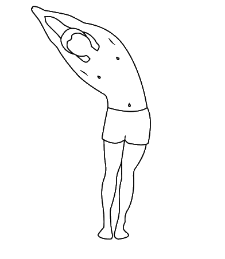
Stork Pose, or Padahasthasana, is a forward-bending yoga posture that promotes flexibility in the spine, stretches the hamstrings, and encourages a sense of grounding. Here's a short description of how to perform Stork Pose:
Tips:
Stork Pose is a rejuvenating stretch that enhances flexibility and brings a sense of calm to the mind and body.
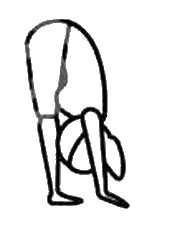
Nethra Vyayamam, or Eye Exercise, is a series of simple movements and techniques aimed at promoting eye health, reducing eye strain, and enhancing vision. Here's a short description of how to perform Eye Exercise:
Tips:
Nethra Vyayamam is a beneficial practice for maintaining healthy eyes and promoting overall well-being.
Kapol Shakti Vardhaka, or Face Exercise, is a set of exercises designed to promote facial muscle strength, flexibility, and overall facial well-being. Here's a short description of how to perform Face Exercise:
Tips:
Kapol Shakti Vardhaka is a beneficial practice for enhancing facial muscle strength and promoting a vibrant appearance.
Simhasana, or Lion Pose, is a yoga posture that involves specific tongue exercises to release tension, improve facial muscle tone, and promote oral health. Here's a short description of how to perform Tongue Exercise within Simhasana:
Tips:
Simhasana with its tongue exercises is a unique and refreshing practice to enhance oral and facial well-being.
Surya Namaskar, or Sun Salutation, is a sequence of yoga poses performed in a flow to greet and harness the energy of the sun. It is a great way to start your day with a combination of physical exercise, stretching, and mindful breathing.
Instructions:
Repeat the sequence, alternating the leg you step back with, for a complete round of Surya Namaskar. Start with a few rounds and gradually increase as per your comfort and stamina.

Trikonasana, or Triangle Pose, is a standing yoga pose that helps improve flexibility, strengthen the legs, and stretch the spine. It also opens the chest and shoulders while promoting balance and stability.
Instructions:
Triangle Pose is a wonderful stretch for the entire body, enhancing both strength and flexibility.
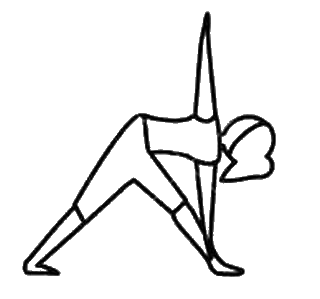
Ardha Matsyendrasana, or Spine twist pose, is a seated twist that helps stretch the spine, shoulders, and hips. It also stimulates the digestive organs and improves flexibility in the spine.
Instructions:
Ardha Matsyendrasana is beneficial for enhancing spinal flexibility and promoting digestive health.
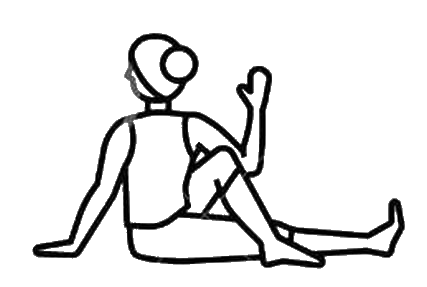
Mula Bandha and Ashwini Mudra are yogic practices that involve engaging and contracting the muscles in the pelvic region. These practices help enhance stability, control, and energy flow in the lower part of the body.
Mula Bandha (Root Lock):
Ashwini Mudra:
Mula Bandha and Ashwini Mudra can be incorporated into your yoga practice to promote grounding, energy flow, and awareness in the pelvic area.
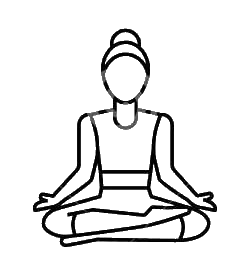
Paschimottanasana, or Seated Forward Bend, is a yoga pose that stretches the entire back of the body, from the heels to the head. This asana is known for promoting flexibility in the spine, hamstrings, and calves.
Instructions:
Paschimottanasana is a calming pose that not only stretches the body but also brings a sense of relaxation and introspection.
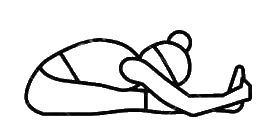
Setu Bandhasana, or Bridge Pose, is a yoga pose that strengthens the legs, opens the chest, and improves spinal flexibility. This pose is also known for its ability to rejuvenate tired legs and relieve mild backaches.
Instructions:
Setu Bandhasana is a rejuvenating pose that not only strengthens the body but also brings a sense of openness and vitality.
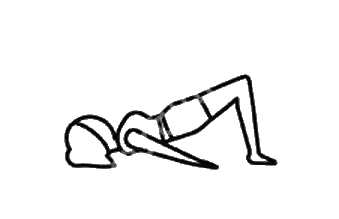
Urdhva Paschimottanasana, or Upward Seated Forward Bend, is a yoga pose that combines elements of both a forward bend and a backbend. This asana provides a deep stretch to the spine, shoulders, and hamstrings, promoting flexibility and balance.
Instructions:
Urdhva Paschimottanasana offers a harmonious blend of forward and backward movements, providing a comprehensive stretch for the entire back of the body.
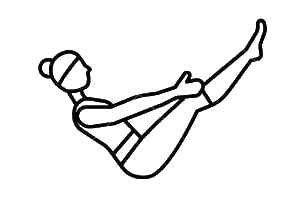
Marjaryasana, or Cat Pose, is a simple yet effective yoga pose that involves arching and rounding the spine. This pose helps improve flexibility in the spine, stretches the back, and provides a gentle massage to the abdominal organs.
Instructions:
Marjaryasana is a wonderful pose for promoting spinal flexibility, relieving tension, and bringing awareness to the breath.
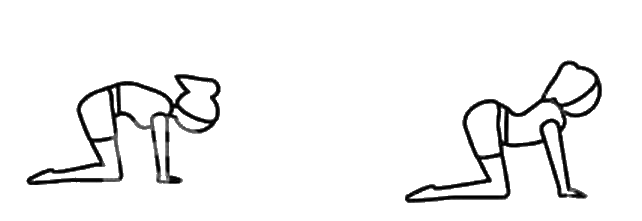
Uddiyana Bandha is a yogic technique that involves the conscious contraction of the abdominal muscles. This practice helps to energize the body, improve digestion, and stimulate the solar plexus, creating a sense of lightness and vitality.
Instructions:
Uddiyana Bandha is a powerful practice that should be approached with awareness and gradual progression. It can be practiced on an empty stomach and is often included as part of pranayama and hatha yoga routines.

Uttana Shishosana, or Extended Dog Pose, is a yoga pose that combines elements of a forward bend and a heart opener. This asana provides a deep stretch to the spine, shoulders, and arms, promoting flexibility and relaxation.
Instructions:
Uttana Shishosana is a gentle and restorative pose that helps release tension in the upper body while creating a sense of openness and relaxation.
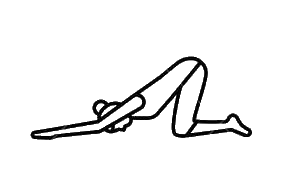
Balasana, or Child's Pose, is a resting yoga pose that helps release tension in the back, neck, and shoulders. It is often used as a resting position between more challenging asanas and provides a sense of grounding and relaxation.
Instructions:
Balasana is a restorative pose that provides a moment of calm and rejuvenation, making it a valuable addition to any yoga practice.
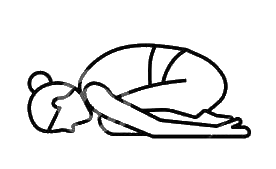
Sirsasana, or Headstand, is a challenging yet invigorating yoga pose that involves balancing on the head and forearms. This asana provides numerous benefits, including increased strength, improved balance, and enhanced mental focus.
Instructions:
Sirsasana is an advanced inversion that requires strength, balance, and proper alignment. It is recommended to practice this pose under the guidance of an experienced yoga instructor.
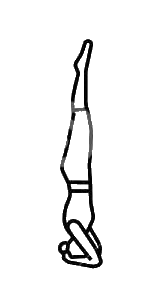
Ardha Kurmasana, or Half Tortoise Pose, is a yoga pose that involves a forward bend with the arms stretched forward. This asana provides a stretch to the spine, shoulders, and arms, promoting relaxation and improved posture.
Instructions:
Ardha Kurmasana is a calming pose that helps relieve tension in the upper body and promote a sense of ease and relaxation.
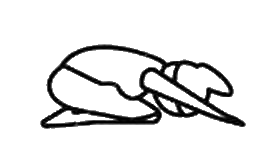
Dhanurasana, or Bow Pose, is a backbending yoga pose that resembles an archer's bow. This asana strengthens the back, opens the chest, and improves flexibility in the spine. It is an energizing pose that stimulates the organs and promotes a sense of vitality.
Instructions:
Dhanurasana is a powerful pose that enhances back strength and flexibility. It is advisable to practice this pose with proper guidance, especially if you are a beginner.
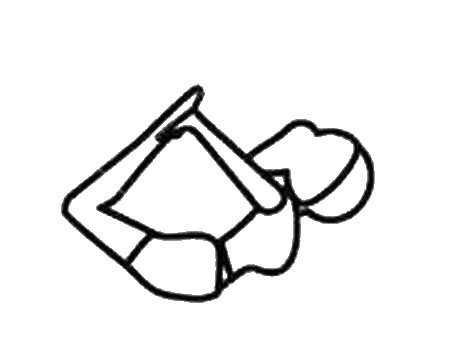
Sarvangasana, or Shoulder Stand, is an inverted yoga pose that involves balancing on the shoulders with the body in a straight line. This asana provides numerous benefits, including improved circulation, reduced stress, and strengthening of the upper body.
Instructions:
Sarvangasana is a rejuvenating pose that offers a multitude of benefits for both the body and mind. It is recommended to practice this pose with proper guidance, especially for beginners.
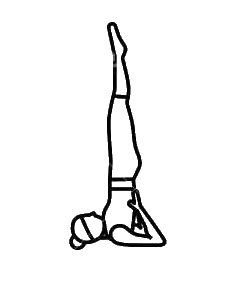
Halasana, or Plow Pose, is a yoga pose that involves folding the body in half, bringing the legs over the head to touch the floor behind. This asana provides a stretch to the spine, shoulders, and hamstrings, and it is known for its calming effects on the nervous system.
Instructions:
Halasana is a beneficial pose that enhances flexibility in the spine and promotes relaxation. It is advisable to practice this pose with proper guidance, especially for beginners.
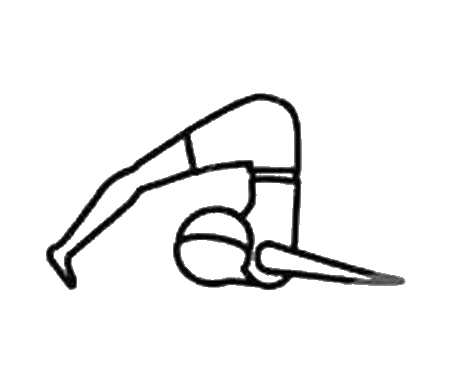
Matsyasana, or Fish Pose, is a yoga pose that involves arching the back and opening the chest. This asana provides a stretch to the neck, throat, and chest, and it is known for its benefits in improving posture and alleviating tension in the upper body.
Instructions:
Matsyasana is a rejuvenating pose that opens the heart center and counteracts the effects of slouching. It is suitable for practitioners of various levels.
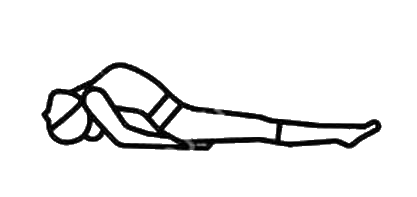
Savasana, or Corpse Pose, is a foundational yoga pose that involves lying on your back in a relaxed and meditative state. This asana is typically practiced at the end of a yoga session to promote relaxation, release tension, and integrate the benefits of the practice.
Instructions:
Savasana is a vital part of any yoga practice, providing an opportunity for rest and rejuvenation. It is a time for complete surrender and integration of the physical and mental benefits gained during the practice.
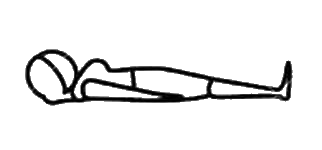
Diaphragmatic breathing, also known as abdominal or deep breathing, is a technique that focuses on using the diaphragm to facilitate deep and mindful breaths. This form of breathing promotes relaxation, reduces stress, and enhances overall well-being.
Instructions:
Diaphragmatic breathing is a simple yet powerful practice that can be done anywhere. It helps activate the body's relaxation response, promoting a sense of calm and balance in your daily life.
Thoracic breathing, also known as chest breathing, involves the expansion and contraction of the ribcage to facilitate breath. While diaphragmatic breathing emphasizes the movement of the diaphragm, thoracic breathing focuses on engaging the chest and upper lungs.
Instructions:
Thoracic breathing can be a useful technique for enhancing lung capacity and increasing awareness of the chest's role in breathing. It complements diaphragmatic breathing and can be practiced as part of a mindful breathing routine.
Full Yogic Breathing, also known as complete or three-part breathing, involves consciously using the diaphragm, chest, and clavicular region to expand the lungs fully. This breath technique enhances lung capacity, promotes relaxation, and balances the flow of energy in the body.
Instructions:
Full Yogic Breathing is a comprehensive breath practice that encourages a full range of motion in the respiratory system. Regular practice can contribute to improved respiratory function and a heightened sense of well-being.